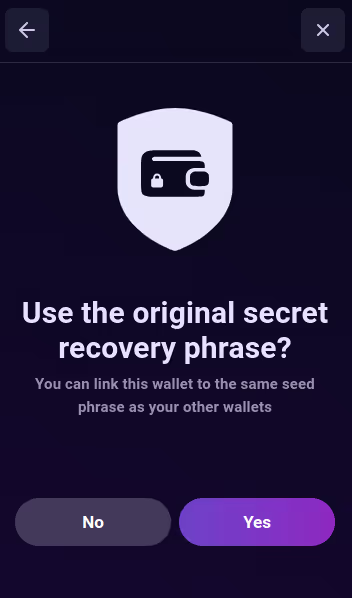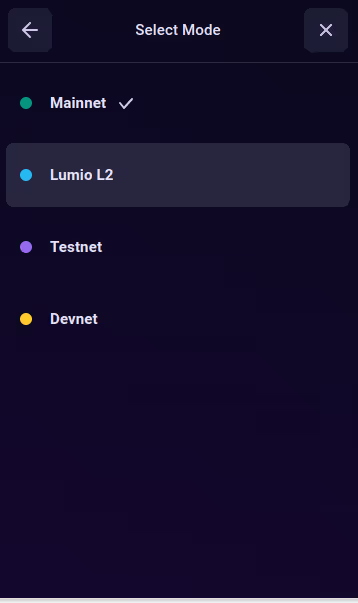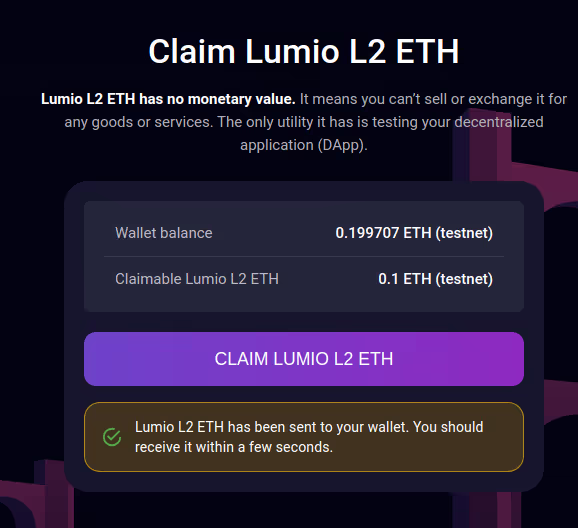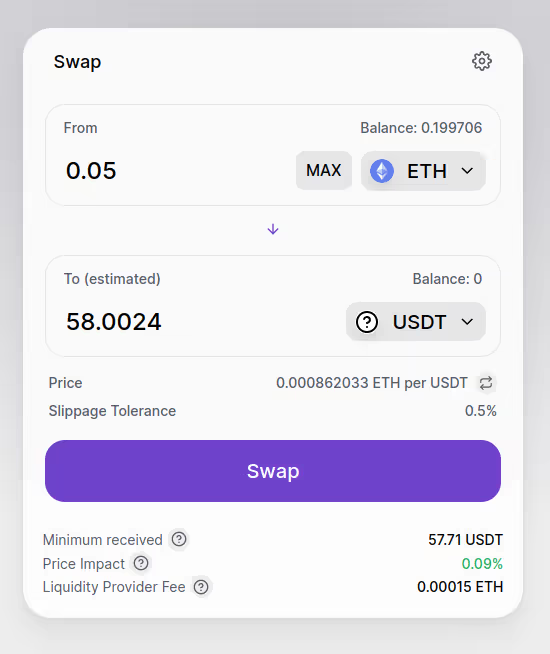What is Lumio?



.avif)
Lumio is a modular L2 project that supports any VM on any chain. It currently supports: Solana VM, EVM, and Aptos Move VM. With VM equivalences, Lumio enables 100% compatibility, enabling app migrations that don't require code changes. Pontem already has two instances of Lumio running: Lumio on Optimism (the canary mainnet and testnet) and Lumio on Solana (devnet; testnet coming soon). Let’s explore how they work, what you can do with them, and more.
What is Lumio?
Lumio is a modular L2 project built by Pontem Network. Lumio is the general name for the whole L2 project, within which will eventually have multiple implementations - separate L2s using different VMs and settling on different L1s/L2s.
A more formal definition is that Lumio is a VM abstraction. It can settle on any L1 blockchain and use any virtual machine as its execution layer. For example, in the Lumio on Optimism (testnet) implementation, it leverages Aptos and Move VM to process transactions that settle on Ethereum.
The main advantage of this approach is that developers can choose their favorite blockchain virtual machine, be it EVM, Solana VM, Move VM, etc. - and deploy on Lumio without compromising security and performance. In other words, devs coming from non-EVM ecosystems like Solana, Cosmos, or Aptos can basically “copy and paste” their dApp code.
For example, building dApps with Move is more intuitive and secure than with Solidity - and with Lumio it becomes possible to deploy such a Move-based dApp and still benefit from the security of Ethereum as the settlement layer.
In fact, our slogan for Lumio is “Any VM, any chain”. As for the name ‘Lumio’, it is connected to Latin “lumen”, which means light. We were thinking of the speed of light, since our L2 makes dApps run faster.
We at Pontem are AltVM OGs - we’ve been building with Move VM and other Rust-based virtual machines for over four years. Back when the Diem blockchain project was being developed at Meta, we even built a Polkadot parachain that would connect the Diem and Polkadot ecosystems. And although it didn’t launch due to the transformation of Diem into Aptos, working with the WASM VM was a valuable experience that we plan to leverage for Lumio in the future.
Are you confused by the terms “settlement layer” and “execution layer”? Let’s move on to a technology breakdown.
Rollup basics: execution, settlement and DA
A rollup is an L2 chain that helps scale the “parent” L1 blockchain. It processes transactions, hashes the key information about them, rolls it up into bundles, and sends those bundles to the L1. To put it differently, the rollup chain executes transactions and then sends them in rolled-up form to be settled on the L1.
Most rollups settle on Ethereum, because it’s the L1 that needs scaling more desperately than others. Ethereum suffers from low transaction capacity and high fees - while its rollups are fast and cheap. However, there are also rollups that settle on other L1s - for example, opBNB uses BNB Chain as settlement layer.
An optimistic rollup is so called because it sends transaction data to the L1 without providing any proof that all those transactions are valid. It optimistically assumes that they are - and if anyone disagrees, they have a window of time (7 days on Arbitrum, Optimism, etc.) to challenge a transaction. If it is found to be invalid (like double-spending), the transaction can be reverted. This optimistic approach saves a lot of resources and allows rollups to maintain low fees.
A rollup doesn’t have to use the same technology as its settlement layer blockchain. It’s enough that it can create transaction data bundles in the format that the L1 understands. The environment that the rollup uses to execute transactions - the virtual machine - is called its execution layer.
Most optimistic rollups’ execution layers are compatible with EVM: for example, Optimism has OVM (Optimism Virtual Machine), while Arbitrum One has AVM. However, a rollup can also compile to a different virtual machine - e.g. Arbitrum Nova uses WASM (same as Cosmos), and yet it still settles on Ethereum.
When we say that Lumio is both settlement- and execution-layer agnostic, we mean that you can create an iteration of Lumio that will execute transactions using just about any VM you want - and at the same time settle them on any L1. This is a very powerful and innovative concept for the L2 space.
One more important layer for a blockchain is the data availability layer (DA layer). It’s where all the data about transactions, smart contracts, etc. is stored so that it’s always available for any blockchain node to consult and verify. The issue of data availability has become urgent with Ethereum’s Dencun upgrade, because from now on Ethereum mainnet will only store rollup transaction data for a short time. Here we won’t go into details on DA, but know that different instances of Lumio will use different chains and solutions for its data - such as EigenDA and Solana.
Speaking of Eigen DA, we have partnered with Eigen Labs to integrate Lumio into its AVS (Actively Validated Services) network.
Parallelized execution, composability, and OP Stack
Let’s now dig even deeper into Lumio’s technology and break down several more terms.
AltVM
AltVM - stands for “alternative virtual machine”, or any blockchain VM that is not EVM. Lumio can support any altVM, be it Move VM, SVM (Solana), CosmWasm, etc.
Read our article on EVM and altVMs
Monolithic UX for liquidity
We aim to leverage LiquidSwap and NarSwap (our DEX built for the EVM implementation of Lumio on Optimism (testnet)) to provide a single UX for swaps and liquidity management across all the chains and VMs that Lumio supports.
Parallelized execution and parallel EVM
Aptos and other Move-based blockchains support parallelized execution - verifying many transactions simultaneously rather than sequentially. Aptos pioneered this technology with its Block-STM engine, and Polygon has already adapted it to EVM. Solana’s SVM also has a parallelization engine, called Sealevel. With Lumio, blockchain devs will be able to benefit from parallelized execution by deploying on various VMs that support it.
An EVM-compatible virtual machine or an instance of EVM that supports parallelized execution is called a parallel EVM. Examples include Sei, Neon, and Monad. Lumio supports parallel EVMs, so devs will be deploy on those, too.
OP Stack
To build our L2, we used the OP Stack - an open-source set of development tools released by the Optimism Collective. Anyone can leverage it to build a scalable and fast optimistic rollup.
The OP Stack already powers the Optimism mainnet. It will also serve as the base of Optimism Superchain – a future network of interconnected L2s. Lumio uses a Rust implementation of the OP Stack, with the Magi client developed by a16z and Reth (Rust Ethereum), the execution layer (full node) developed by Paradigm.
The advantage of this solution is that it makes it much easier to integrate Move VM, since Move itself is based on Rust. Move itself is a secure and efficient smart contract language than Solidity.
Cross-VM calls
You can deploy the same dApp on different instances of Lumio (like EVM and Move VM), but these dApp instances won’t be automatically able to communicate with each other. To achieve true multichain performance, you’ll need to use Cross-VM contract calls - an advanced feature that Lumio supports. Our vision is to interconnect liquidity on all supported chains.

Lumio implementations: Lumio on Optimism & Lumio on Solana
Lumio on Optimism
The canary mainnet
The first instance of Lumio to settle on the Ethereum mainnet. It is built using the OP Stack - an open-source set of development tools released by the Optimism Collective. Anyone can leverage it to build a scalable and fast optimistic rollup.
The OP Stack already powers the Optimism mainnet. It will also serve as the base of Optimism Superchain – a future network of interconnected L2s. It will be part of SuperChain, together with Optimism itself, Base, opBNB, Worldcoin, Mode, Zora, Lisk, and other L2s. Once Superchain is fully deployed, the Lumio mainnet on Optimism will also benefit from its shared security and composability.
Pontem received a Builders Grant of 50,000 OP from the Optimism Collective to continue developing Lumio and integrating it into the Superchain.
Lumio on Optimism (the canary mainnet) uses a Rust implementation of the OP Stack, with the Magi client developed by a16z and Reth (Rust Ethereum), the execution layer (full node) developed by Paradigm. It can also leverage altVMs like Move VM or Solana VM for faster and safer execution.
To launch this implementation of Lumio, we used Conduit, a premier solution for deploying customizable rollups. Conduit helps reduce the rollup cycle from months to weeks, and we’d like to thank the Conduit team for their support.
Pontem Wallet supports the canary mainnet of Lumio out of the box. To create a wallet, click on your account name in the top left of the wallet window -> Create Wallet -> SuperLumio.


Click ‘Yes’ if you would like to use the same mnemonic (seed phrase) for your SuperLumio wallet as for the Aptos wallet.

The gas currency on the canary mainnet of Lumio is ETH. You can bridge ETH from Ethereum to Lumio using Lumio Bridge.

Once you have ETH on the canary mainnet of Lumio, you can send it to another address. The next step is to launch liquidity pools and swaps - stay tuned for updates.
Since this implementation of Lumio is an EVM chain, you can also add it to MetaMask. Use the following parameters:
1. Name: SuperLumio
2. RPC: https://mainnet.lumio.io
3. Chain ID: 8866
4. Coin: ETH
5. Block explorer: https://explorer.lumio.io
Testnet
Lumio testnet on Optimism is a production-grade sandbox - a fully functional rollup that exists in two “flavors” - EVM and MoveVM. Both versions currently settle on Ethereum’s Sepolia testnet but should also eventually move to mainnet.
Like the canary mainnet of Lumio, Lumio testnet uses a Rust implementation of the OP Stack, with the Magi client developed by a16z and Reth (Rust Ethereum), the execution layer (full node) developed by Paradigm. The most important difference from the canary mainnet is that Lumio testnet leverages Move VM for faster and safer execution.
Pontem L2 isn’t open to the general public yet - you need to be whitelisted to test it. On the Lumio website, click on Join Whitelist and enter your details to join the waiting list.

Once you’ve been whitelisted to test Lumio testnet, make sure to switch the network in Pontem Wallet from Mainnet to Lumio L2.


Move VM
- Claim gas coins. In Pontem Wallet itself there is a faucet that distributes NAT – just another ticker for testnet ETH that Lumio testnet uses for gas. NAT doesn’t have any real-world value.

- Use Liquidswap. Liquidswap supports Lumio testnet on Move VM, so you can make swaps or add liquidity to pools straight away. Liquidswap for Lumio features a faucet where testers can claim testnet BTC and USDT for swaps. Of course, since these are testnet pools, the prices can differ wildly from real-world prices. This is fine, since testnet coins are valueless anyway.
- Explore. Lumio testnet already has its block explorer where users can track their transactions.
EVM
Important: you need to have an EVM address whitelisted to test Lumio on EVM. It can be your regular MetaMask address, too, but it needs to be imported into Pontem Wallet. We are putting in place a system for whitelisting EVM addresses; for now, if you are already whitelisted on Aptos, you can contact the team and submit your Ethereum address.
- Claim testnet ETH. For whitelisted EVM addresses, there is a faucet that distributes testnet ETH on Lumio testnet. Note that Pontem Wallet needs to be in the Lumio L2 network mode and with the whitelilsted Ethereum wallet account active.

- Use NarSwap. NarSwap DEX is the first use case for Lumio on EVM, currently supporting testnet ETH, USDT, and USDC. You can try swapping or adding liquidity to pools.

- Explore. Use the Explorer to view your transactions on Lumio testnet for EVM.
Lumio on Solana
The next implementation of Lumio will settle on Solana. On the level of execution, it will support SVM (Solana VM), EVM, Move VM, and other VMs. In other words, it will be the first Solana rollup with multiple choices for the execution layer. It will allow developers to maintain the benefits of their VM of choice and at the same time integrate their products into the Solana ecosystem.
For now, Lumio on Solana is on devnet. With support for SVM and Move VM, Lumio offers a high-performance Layer 2 solution on Solana.
Lumio currently operates in multiple environments. All of these will be unified into one Layer 2 (L2) solution - Lumio v2 architecture, which supports SVM, EVM, and Move VM. This represents the final version of Lumio's functionality.
To summarize: anyone can try Lumio on the canary mainnet by bridging ETH from Ethereum, but you need to be whitelisted to try Lumio on Optimism testnet. Keep following our announcements on X (Twitter) for new whitelisting campaigns and for news on the launch of soLumio!

.svg)




